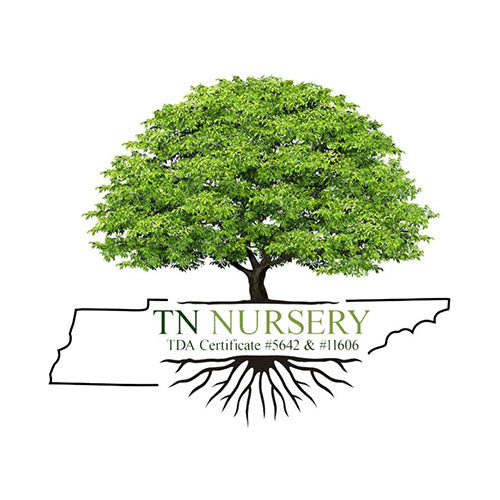A Guide to Irises, Daylilies, Coneflowers, Yarrow, Shasta Daisies, Blanket Flowers, and Black-Eyed Susans
For busy gardeners, maintaining a lush and vibrant garden can take time and effort. However, there is good news: low-maintenance perennials can help you achieve a beautiful garden without needing attention and care. This guide will explore some of the most resilient and easy-to-maintain perennials that will thrive in your garden while allowing you to focus on other aspects of your life. Among these remarkable plants are irises, daylilies, coneflowers, yarrows, Shasta daisies, blanket flowers, and black-eyed Susans.
Irises (Iris spp.)
Irises are a classic choice for any garden, renowned for their elegance and low maintenance requirements. These perennial beauties come in a wide range of colors and varieties, making it easy to find the perfect fit for your garden's aesthetics. Irises are hardy and can thrive in various soil types as long as it is well-draining. For best results, plant them in a sunny to partially shaded spot.
Maintenance Tips:
- Irises require minimal watering once established. Water them thoroughly when planting, and then let them be.
- Divide irises every three to four years to prevent overcrowding and promote healthier growth.
- Remove spent flowers to encourage reblooming and maintain a tidy appearance.
- Pest and disease problems are relatively rare, making irises a hassle-free addition to your garden.
Daylilies (Hemerocallis spp.)
Daylilies are another fantastic choice for busy gardeners, thanks to their resilience and long-lasting blooms. These perennials come in various colors and bloom shapes, providing a burst of color in your garden from early summer to late fall. They adapt well to different soil conditions and prefer full sun to partial shade.
Maintenance Tips:
- Daylilies are drought-tolerant once established, so water sparingly.
- Deadhead spent flowers to encourage continuous blooming.
- Divide daylilies every few years to prevent overcrowding and maintain their vigor.
- They are generally pest and disease-resistant, making them a low-maintenance choice.
Coneflowers (Echinacea spp.)
Coneflowers are beautiful and attract pollinators like bees and butterflies to your garden. These hardy perennials are known for their vibrant, daisy-like blooms, which come in various colors, including purple, pink, and white. Coneflowers are drought-tolerant and can thrive in well-drained soil and full sun.
Maintenance Tips:
- Water coneflowers regularly during their first growing season to help establish their roots. Once established, they can tolerate dry conditions.
- Deadhead dead flowers to promote continuous blooming and prevent self-seeding.
- Coneflowers are generally pest and disease-resistant but watch for aphids or Japanese beetles.
Yarrow (Achillea spp.)
Yarrow is a hardy perennial that is well-suited for low-maintenance gardens. Its fern-like foliage and flat-topped flower clusters add a unique texture to your garden. Yarrow blooms in various colors: white, yellow, and pink. It does best in well-drained soil and full sun.
Maintenance Tips:
- Yarrow is drought-tolerant once established, so water sparingly.
- Deadhead dead flowers to prolong the bloom period.
- Yarrow is relatively pest and disease-resistant, making it a hassle-free addition to your garden.
Shasta Daisies (Leucanthemum x superbum)
Shasta daisies are perennial favorites for their cheerful white and yellow blooms. They are easy to grow and maintain, making them an excellent choice for busy gardeners. Though these daisies thrive in well-draining soil and full sun, they can tolerate partial shade.
Maintenance Tips:
- Water Shasta daisies consistently during their first growing season. Once established, they are relatively drought-tolerant.
- Deadhead spent flowers to encourage continuous blooming.
- Shasta daisies are generally pest and disease-resistant, making them a low-fuss addition to your garden.
Blanket Flowers (Gaillardia spp.)
Blanket flowers are known for their striking, daisy-like blooms in vibrant red, orange, and yellow shades. These perennials are visually appealing and attract pollinators like butterflies and bees. Blanket flowers thrive in well-drained soil and full sun.
Maintenance Tips:
- Water blanket flowers regularly during their first growing season to help establish their roots. Once established, they can tolerate dry conditions.
- Deadhead spent flowers to promote continuous blooming.
- Blanket flowers are generally pest and disease-resistant, making them a low-maintenance choice.
Black-Eyed Susans (Rudbeckia spp.)
Black-eyed Susans are a quintessential addition to any low-maintenance garden. These hardy perennials are known for their bright yellow petals and dark central cones resembling a black eye. They thrive in well-draining soil with full sun but can tolerate partial shade.
Maintenance Tips:
- Water black-eyed Susans consistently during their first growing season to help establish their roots. Once established, they are relatively drought-tolerant.
- Deadhead spent flowers to encourage continuous blooming.
- Black-eyed Susans are generally pest and disease-resistant, making them a hassle-free addition to your garden.
Incorporating low-maintenance perennials like irises, daylilies, coneflowers, yarrow, Shasta daisies, blanket flowers, and black-eyed Susans into your garden is a smart choice for busy gardeners. These resilient plants require minimal care once established and provide year-round beauty with their vibrant blooms. With a little initial effort, you can create a garden that thrives with minimal attention, allowing you to enjoy its beauty while focusing on other aspects of your life. Happy gardening!
